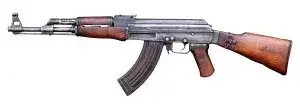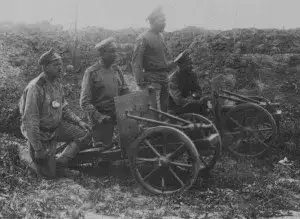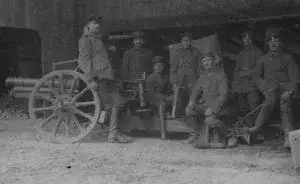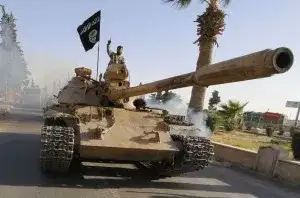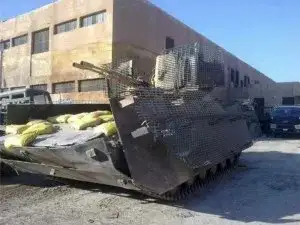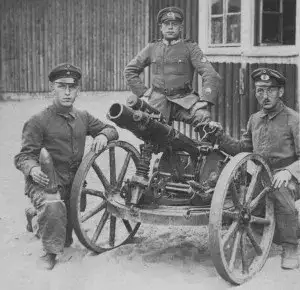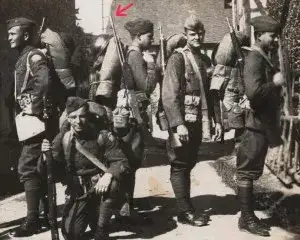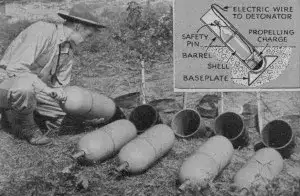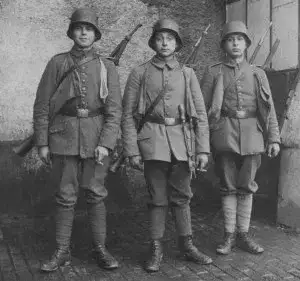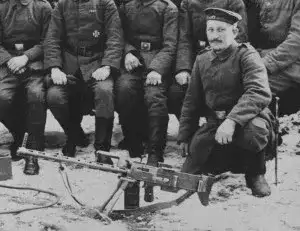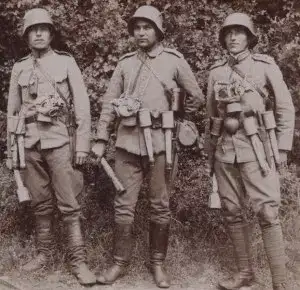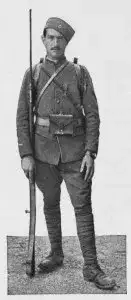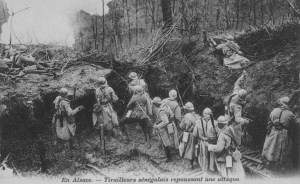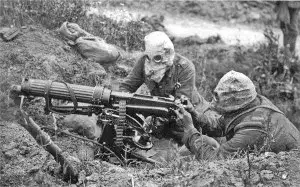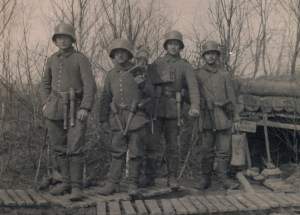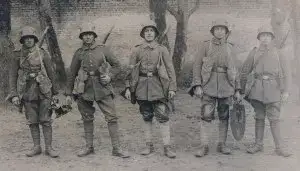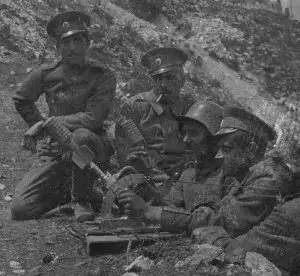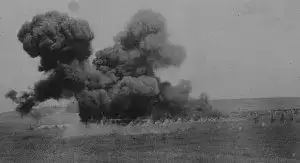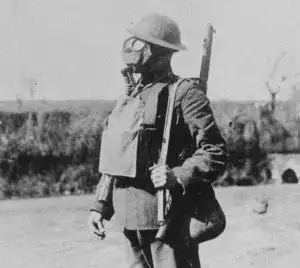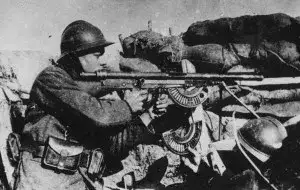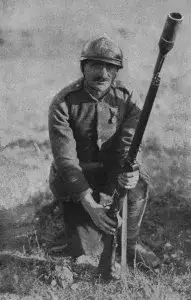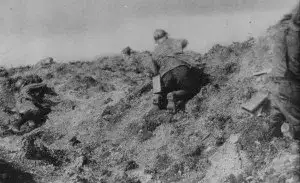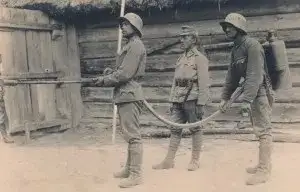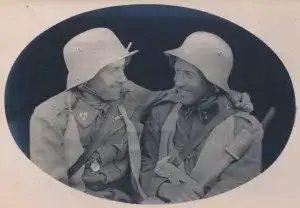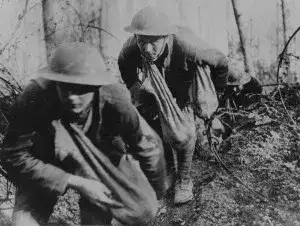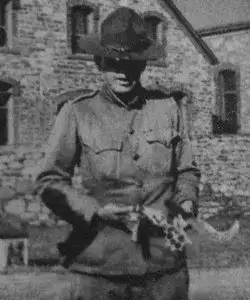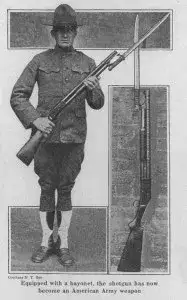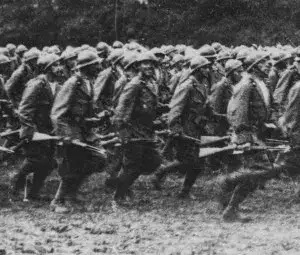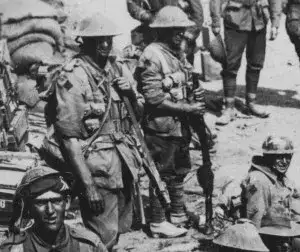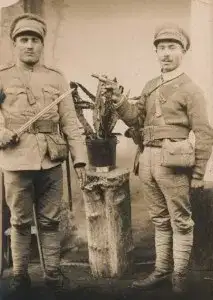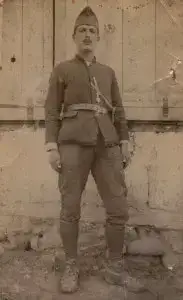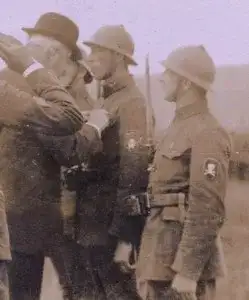World War I soldiers versus the Islamic State
March 15, 2024 by Thomas Wictor
On Twitter a man claiming to be a member of the Islamic State tried to engage me. He said he was a combat veteran of fighting against the US and Israel. Literally everything he tweeted was factually incorrect, and he wrote in perfectly fluent, colloquial American English. I’m sure he’s a fake, but I blocked him on principle, especially when he transitioned into the staples of Jew-hate: a) the accusation that Israel controls the US, and b) homoerotic references. Every Jew-hater is obsessed with man-on-man action. But reading his tweets inspired me to create a battle between World War I soldiers and the Islamic State. This is how it would go.
This scenario is that a combined force of World War I soldiers from all the combatant nations will take a town held by the Islamic State.
The Islamic State is armed with assault rifles capable of selective fire, meaning single shots or fully automatic bursts.
World War I soldiers use bolt-action rifles that fire only one bullet at a time. However, the bullets are of much higher caliber than those of modern assault rifles. As a result they have a much longer range and greater stopping power. Also, a highly trained infantryman can lay down an incredible volume of fire. This World War II British rifle is basically the same weapon that was used in World War I.
Inventories of both sides include hand grenades, grenade launchers, mortars, and light machine guns. In addition, the Islamic State has rocket-propelled grenades (RPGs).
To more than balance out the lethality of RPGs are World War I trench guns and infantry guns. A trench gun is a light cannon—usually 37mm—that can fire high-explosive, shrapnel, or armor-piercing shells.
This is the Russian M1915 Rosenberg trench gun.
It’s easily brought forward, has a low profile and bulletproof shield, and is accurate up to 1200 yards (1097 meters). An RPG is accurate against stationary targets up to 546 yards (500 meters).
Here’s a German 77mm field piece that’s been converted to an infantry gun by lowering it almost to the ground.
Using straps, the crew and a specially trained infantry squad haul it by hand to the front line, where it’ll blast away at point-blank range. Hand-grenade throwers, light machine gunners, and rifle grenadiers protect the artillerymen.
In preparation for the assault, the World War I soldiers dig trenches around the town held by the Islamic State. It’s entirely possible that the Islamic State won’t notice the preparations, since the terrorists have no air force. In World War I, entire battles were fought by armies that had crept close to the enemy, dug huge trench networks, and camouflaged them. Both the Brusilov Offensive and the Battle of Caporetto were surprise attacks by hundreds of thousands of troops.
The Islamic State has main battle tanks (MBTs) and infantry fighting vehicles (IFVs.) This is an Islamic State T-72 MBT.
Here’s an Islamic State BMP-1 IFV converted into a self-propelled antiaircraft artillery gun (SPAAG) by putting a twin-barreled ZU-23-2 autocannon on it.
The steel plate, metal mesh, and sandbags are an attempt to defeat the tandem warheads of RPGs. This IFV is used for urban combat, not to shoot down aircraft.
Almost all World War I soldiers are trained in antitank warfare. Infantry guns can easily disable a present-day MBT or IFV by blowing off the treads. The Germans also created an antitank gun by putting a 75mm mortar on what’s called a “flat-trajectory carriage.”
Special hardened, armor-piercing rounds are fired. They can’t penetrate into crew or engine compartments, but they can stop modern MBTs and IFVs by destroying their running gear.
The Americans have automatic rifle squads, armed with the horrendously powerful Browning Automatic Rifle (BAR).
Bullets from the fully automatic BAR can pierce all the helmets and body armor worn by the Islamic State.
If I were in command of troops from World War I, and my mission were to take a town held by the Islamic State, I’d have the men dig trenches as close to the objective as possible. At Zero Hour, I’d open fire with heavy-caliber trench mortars, artillery, and Livens projectors.
Since using chemical weapons is illegal under international law, the Livens projectors would fire incendiary drums full of oil instead. When they burst on the ground, they splash burning oil in all directions. The projectors are used in batteries of twenty-five; I’d deploy about sixty batteries, I think. They have a range of 1300 yards (1189 meters).
While the barrage hits the town, the infantry assault begins, led by German flamethrower shock troops. Each flamethrower shock troop is composed of two portable-flamethrower squads.
And hand-grenade throwers.
And light machine gunners.
The Germans use the “knife tactic,” attacking in long, slender formations. It’s called the knife tactic because it cuts the enemy line into “separate, still-quivering sections.”
Bulgarian shock troops accompany the Germans.
The Bulgarians were the best counterattack specialists during the war. Physically, they were unnaturally strong, and they never lost a single counterattack. If the Islamic State begins to push back, the Bulgarians will save the day.
Moroccans are also in the initial assault.
As are Senegalese.
The Moroccans and Senegalese were the most ferocious of all the war’s combatants.
To cover the advance, British heavy machine gunners in the trenches use their long-range, indirect fire to rain bullets down in an arc on anyone they see.
Other heavy machine gunners go out onto the battlefield to set up their weapons as close as they can to the enemy.
Some trench guns remain behind, firing at the Islamic State gun trucks. Other trench guns and the infantry guns join the first assault wave in order to find or dig emplacements at the edge of the town.
The Germans and Bulgarians in the first wave bring small spigot mortars with them.
They assemble the mortars on the battlefield and use them to fire aerial fragmentation grenades at snipers or massed personnel.
If the mortar squads know the range, they can drop a grenade right on someone’s head. This model is called the the “priest’s thrower,” because it was designed by an Austrian Catholic cleric.
As the first wave —supported by heavy machine guns, snipers, spigot mortars, trench guns, and infantry guns—reaches the town held by the Islamic State, the barrage from the trenches stops, and flamethrower squads release “covering jets” that produce massive clouds of black smoke.
Obscured by smoke, the Germans, Bulgarians, Moroccans, and Senegalese pounce on the enemy. All these troops are extensively trained in urban combat. Fighting in a town would be a breeze for them. In fact during World War I, the Germans invented special-forces training techniques that are still used today. For example, they’d build replicas of towns and rehearse assaults multiple times.
In the second wave are Canadians, the best Allied shock troops.
The Canadians attack in fighting platoons, each made up of two rifle sections and two light-machine gun sections. Every man of the rifle sections carries at least ten hand grenades. With the Canadians are French assault troops, organized into combat groups. Each group has one machine rifle.
One rifle grenadier.
And five hand-grenade throwers.
The third wave is for mopping up. Austrians equipped with flamethrowers neutralize the last pockets of resistance.
This is because Austrian military doctrine prohibits flamethrowers from being used in the first wave. The flamethrower sappers are protected by riflemen and squads of hand-grenade throwers.
Americans excel at mopping up. They often fight with the minimum of equipment, usually hand grenades.
Also pistols, brass knuckles, and blades of various kinds.
And 12-gauge shotguns known as “trench sweepers” or “trench brooms.”
For sheer stylishness, Italian arditi (bold ones) are paired with the Americans.
They wear white shirts and black ties into combat, and they test the nerves of potential recruits by throwing live hand grenades at them. What I mean is, they pull the pin first. So the grenade explodes. And they do it without warning.
Australians turn mopping up into a deadly game called “ratting.”
Their special jackets are fitted with roomy pockets for hand grenades. The enemy is smoked or blasted out of his strong points by teams of bombers and bayonet men. If the enemy doesn’t want to surrender, he’s cheerfully accommodated.
The Portuguese are supremely skilled at close combat, using daggers, bayonets, pistols, hand grenades, and a martial art called jogo do pau (game of sticks).
Cellars, basements, and bunkers become mass graves for jihadis.
The Greeks are genuine artists when it comes to silent, nocturnal fighting. This soldier is equipped with just a revolver on a lanyard and two tunic pockets full of ammunition. There’s nothing on him that’ll clink.
He wears trousers with reinforced knees so that he can crawl around on rocks or in rubble. If the sun goes down, he’ll find the survivors. They’ll never hear him coming.
To make sure nobody gets away, the Czech 1st Storm Battalion guards the flanks.
They prefer the bayonet to bullets.
It wouldn’t be much of a fight. In fact I predict mass surrender of the Islamic State. A hundred years ago people knew how to wage total world war. Millions went up against millions, and millions were killed.
That’s something to remember. Things aren’t as bad as they seem sometimes.
This article viewed 2264 times.

